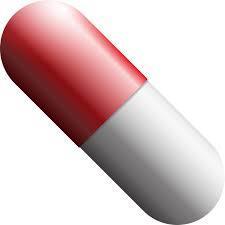Does medical marijuana really work? That’s a question that everyone is asking these days. The answer—usually—is: “more research is needed.” But what if “more research” doesn’t give us the answers we’re looking for?
That’s the cautionary lesson of an article that was published this week in JAMA Internal Medicine: Much of the research on medical marijuana is flawed. If you look closely at the randomized controlled trials of marijuana, what seem to be impressive benefits are often questionable. And for some conditions, medical marijuana might not work at all.
To understand how the science of medical marijuana can be so misleading, it helps to know that these trials generally compare real vs. ‘placebo’ marijuana. Yes—you can get placebo marijuana, and in fact there are companies like Bedrocan that specialize in making it. Placebo marijuana is Cannabis sativa or Cannabis indica flowers from which the active ingredients—cannabinoids such as tetrahydrocannabinol (THC) and cannabidiol (CBD)—have been extracted. (The process is similar to what’s used to extract caffeine from coffee beans.) ‘Placebo’ marijuana is indistinguishable in appearance, taste and odor from the real thing.
Placebo controls work well for studies of many drugs, but they don’t work for marijuana, because people know whether they’re getting real marijuana or a placebo. Even though placebo marijuana looks and smells like the real thing, it lacks THC, so it won’t make you high. It also won’t cause any of the short-term side effects that marijuana is known for, like dry mouth or an elevated heart rate. So it’s very easy for most people to figure out whether they’re getting real marijuana or a placebo.
Here’s an example. This study was a so-called “crossover” trial, in which some people got real marijuana, while other people got the placebo. Then they switched. Of the 15 patients who got real marijuana first, 14 of 15 guessed correctly what they’d been given. Granted, of those who received placebo marijuana first, only 5/13 (38%) guessed correctly. However, when those people crossed over to active marijuana, almost all guessed correctly (12/13, 92%). So most of these people were able to figure out whether they were getting real marijuana or not.
In a clinical trial, when patients know that they’re getting the real treatment, the trial’s results tend to overestimate actual benefits. That’s because the results we experience are driven by our expectations. When people know they’re getting real marijuana—and especially if they think that marijuana might be beneficial—they’re more likely to believe that it is in fact beneficial.
People who are experienced users of marijuana may be particularly likely to report exaggerated benefits because they’d be more likely to know whether they’re being given marijuana or a placebo. Also, patients who use marijuana for a symptom because they believe it works will be especially likely to believe that it will work for them. And most trials do enroll experienced users. Researchers often prefer to recruit these patients because they want to avoid unwelcome surprises like paranoia or hallucinations that can occur when people try marijuana for the first time.
Still, some—or maybe all—of the benefits that we’re seeing in randomized controlled trials of marijuana could be nothing more the product of expectations and the placebo effect. It may not work as well as these studies suggest. In fact, it may not work at all.
So patients and physicians need to be cautious about these studies. For instance, we should be skeptical about the results of trials that enroll experienced users. And we should probably reserve judgment when a trial’s patients are able to guess correctly whether they got real marijuana or placebo.
On the other hand, we can probably trust those studies that test marijuana with low concentrations of THC and high concentrations of CBD. It’s THC that is responsible for the euphoria and side effects that let patients figure out whether they’re getting active marijuana or a placebo. Unlike THC, CBD doesn’t have any of those effects.
So how do we design better studies of medical marijuana?
The best solution would be to use a psychoactive placebo. That’s a drug that has some of the euphoric effects of THC, but which doesn’t have its medical effects. This method was first used in the now-famous study of the effects of psilocybin (the active ingredient in “magic mushrooms) on religious experience in the “Marsh Chapel Experiment,” conducted in Boston University’s Marsh Chapel. Some research subjects received psilocybin and some were given niacin because it was thought that niacin’s flushing reaction would convince some subjects that they’d been given psilocybin. (More recently, this trope appears in the rebooted X-Files series, in which Fox Mulder (David Duchovny) is tricked into thinking that he’d been given psilocybin.)
And that brings us to what we really need: More funding for marijuana research. For instance, we need funding for rigorous research that will identify a drug that can be used as a psychoactive control. And we need research to understand what dose of THC is low enough that blinding is no longer a problem. And above all, we need funding for randomized controlled trials that are as rigorous, and as trustworthy, as trials of new drugs are.
credit:huffingtonpost.com

